Research Tools
Using Zotero to Manage Research Sources
What is Zotero?
Zotero (Zoh-TAIR-oh) is a free citation manager that helps you to store, collect, manage, and cite your research sources. This program is similar to software packages like ProCite and Endnote, but it is completely free. Zotero has functionality such as:
- Source database / library: collect key information about numerous types of research sources in an easy-to-manage format.
- Annotation, tagging, and storage of sources;
- Storage of PDF articles;
- Generation of bibliographies in numerous citation formats.
How do I get it?
The full version of Zotero is available as a standalone application at http://www.zotero.org. It runs on Windows, Mac, and Linux operating systems.
For users who only need to generate individual source citations, ZoteroBib is available at https://zbib.org/; this site works similarly to CitationMachine or Noodlebib.
Zotero.org:

You can start the download process by clicking on the blue download button.
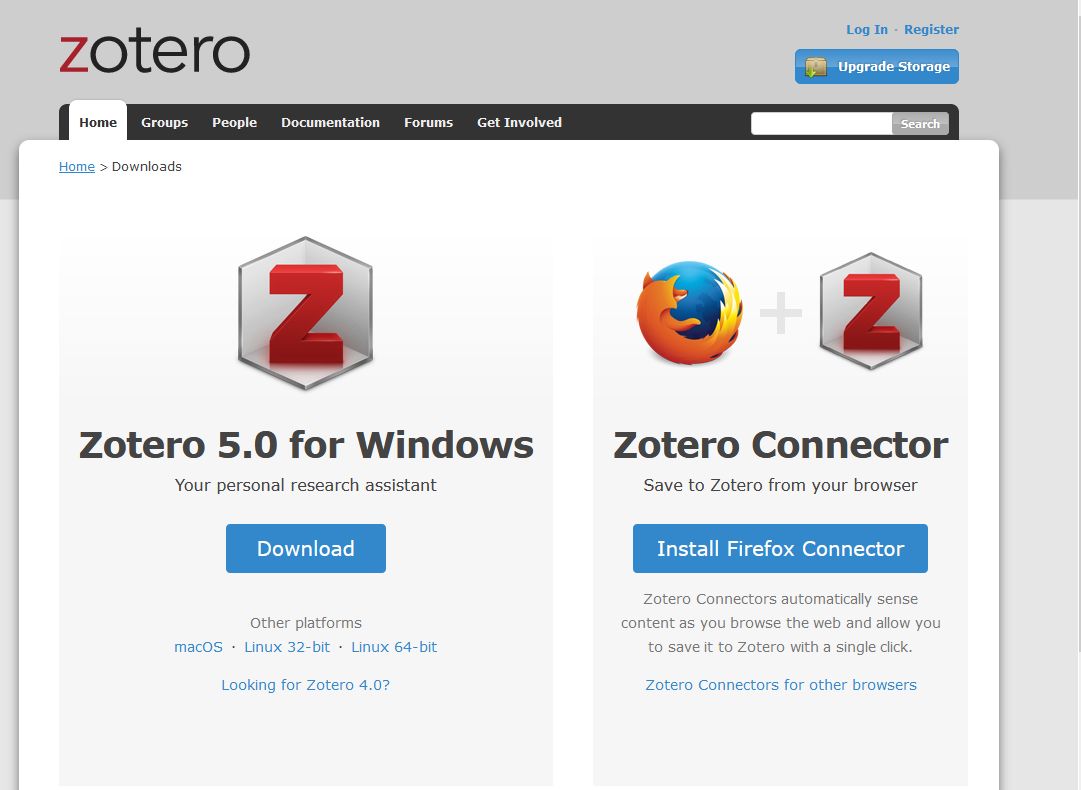
Clicking on the Download icon will bring up the option to save the installation file.
Follow the setup instructions to install the Zotero application. The icon will look like this:
![]()
How Do I Use Zotero?
After installation, clicking on the Zotero icon will open the Zotero interface.
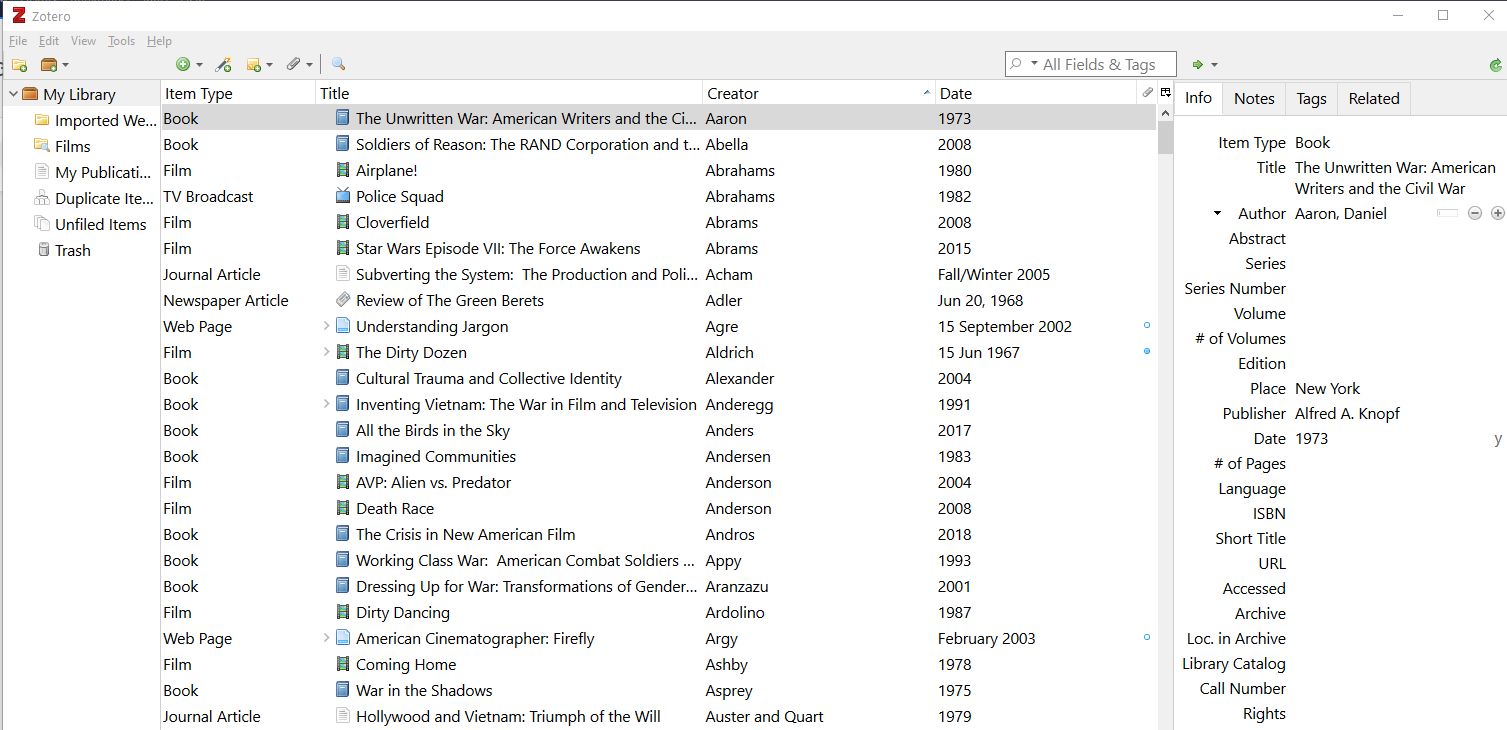
This interface is the core of the Zotero database. It is through this screen that you can add new citations, edit existing citations, and even add citations and bibliography entries into Word documents.
Note: citations created in EndNote or ProCite can be imported into Zotero. Instructions on doing this are available at http://www.zotero.org.
The Zotero workspace is organized in several windows. On the left is a file tree that enables filtering of the Zotero source library.

The center window contains displays of various database fields of the Zotero library in column form. Here, “Item Type,” “Title,” “Creator,” and “Date” are selected.

The library can be sorted by column simply by clicking on it, and the columns can be dragged and re-ordered. Additional columns can be displayed by clicking on the icon to the right:

The right-hand window shows the detail of the selected source; users can change / edit source details through this window.
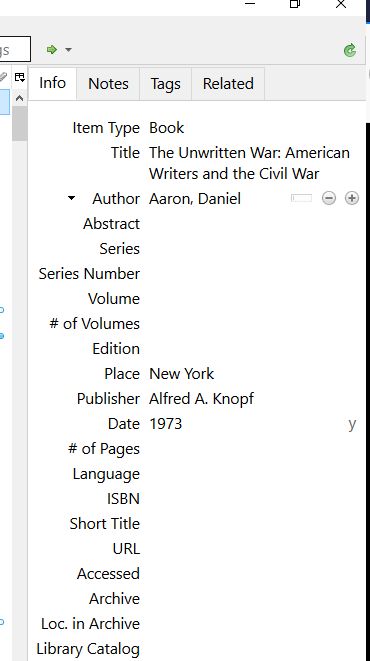
Adding Citations
Adding a citation to Zotero is a quick and easy process, requiring some simple data entry and a couple of mouse clicks. Many types of sources can be used—from books and periodical / journal articles to informal documents and non-print media like films.
To add a new citation, locate the toolbar at the top of the Zotero database window. The green circle icon on the left is the “Add New Item” button. Clicking that will bring up a small side-menu, that will enable you to select which kind of source your new item is. :
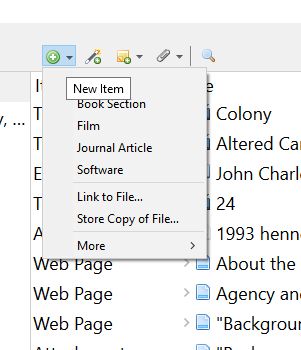
To select another form of source, navigate to “More” at the bottom of the menu to access a larger list of item types:
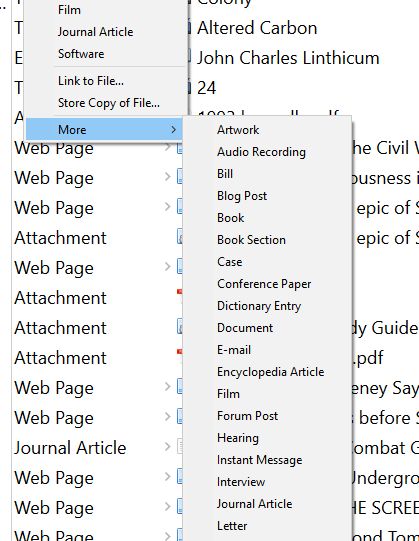
After you select the appropriate item type, a blank entry appears on the right hand side of the database interface. To complete the citation, enter the item details in the empty spaces:
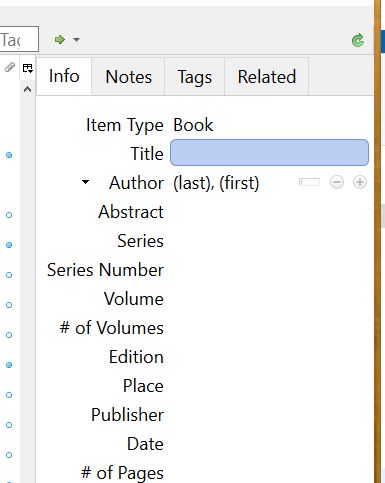
Enter the appropriate item information in the relevant fields in the Zotero interface, and repeat as necessary for any research source you have. Here is a sample Book entry:
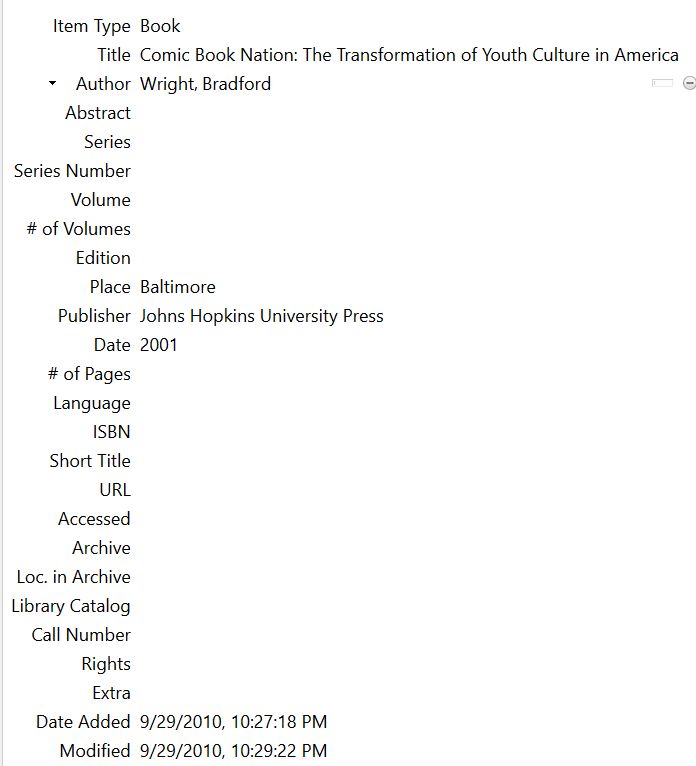
Entries for journal articles, films, and other sources will vary slightly from this model in which data points are entered.
As in most database programs, the information entered in each field is saved automatically; there is no need to click “Save” as each data point in the record is saved automatically.
Notes, Tags, and Related Sources
A very useful feature of Zotero is its ability to allow users to store Notes concerning a particular source, to Tag the source with keywords, and to link the source to Related sources. This is done from the same interface as the Add Citation feature. Using this feature, you can store all your citations—for all your projects—in one place, and organize / filter them by their Tags / Keywords. To add this extra information, simply click the tab at the top of the Item Info / Item Entry menu (where you just added your item).
The Notes tab opens a text editor program that enables you to write notes on a source. The Tags tab enables you to add searchable keywords (as many as are relevant, such as project names or overall topics), and the Related tab enables you to link together records / citations you have entered.

Zotero Bibliographic Entries
Once you have built a Zotero library, either through hand-entry of your citations or via importing them from some other software like ProCite or Endnote, you can easily use your Zotero entries to create bibliographies / Works Cited pages and, via a plug-in for Word, in-text citations. These bibliographies can be formatted in one of many citation formats, such as APA, MLA, or Chicago. The easiest way to create a bibliography is to simply highlight the citations you want to include and right click.
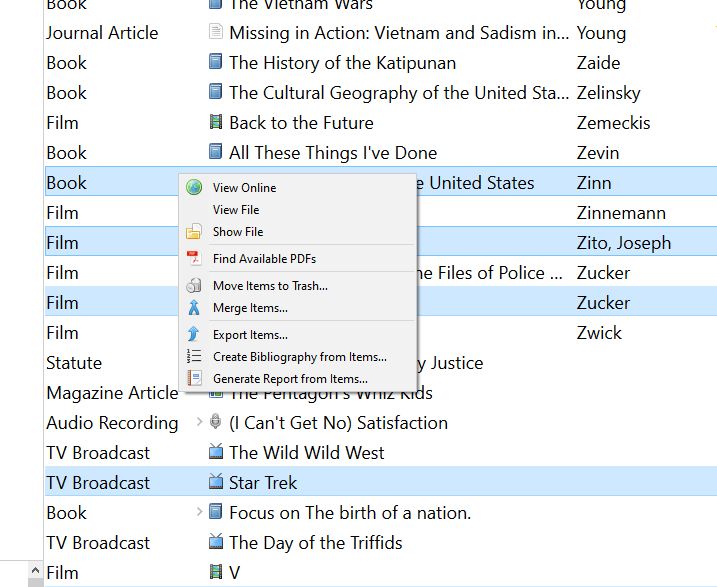
Selecting "Create Bibliography From Items" will bring up an output screen, where you can choose the Citation Style for the bibliography (APA, MLA, Chicago, and numerous others), as well as how you want to save the bibliography-- as a Rich Text Format (RTF) file, as an HTML file, or as text on the clipboard.
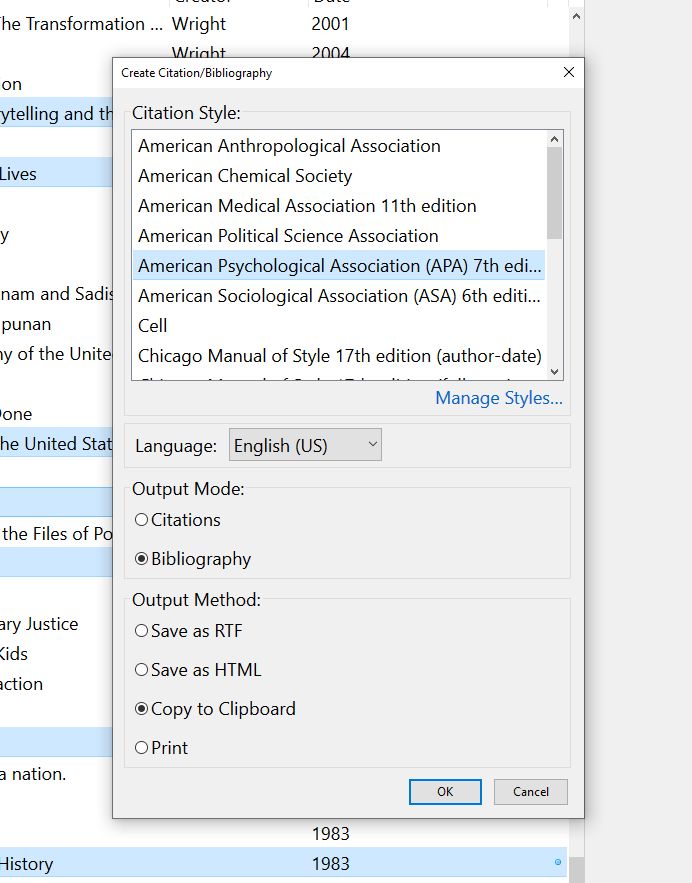
An APA-formatted bibliography of the above sources will be outputted like this:
Other Features of Zotero Not Covered Here
- For Zotero Technical Support, Visit: http://www.zotero.org/support/
- Zotero Syncing: Using a Zotero account, you can sync your library with Zotero.org’s servers, and access it from any internet-connected computer on which Zotero is installed.
- Word Processor Integration: Using the Word or OpenOffice plugin for Zotero, you can automatically generate bibliographies and in-text citations.
- Web Screenshots. You can automatically create a Zotero entry from Zotero-compliant web pages, with a single click.
- You can attach PDF or other files to your Zotero citations.
